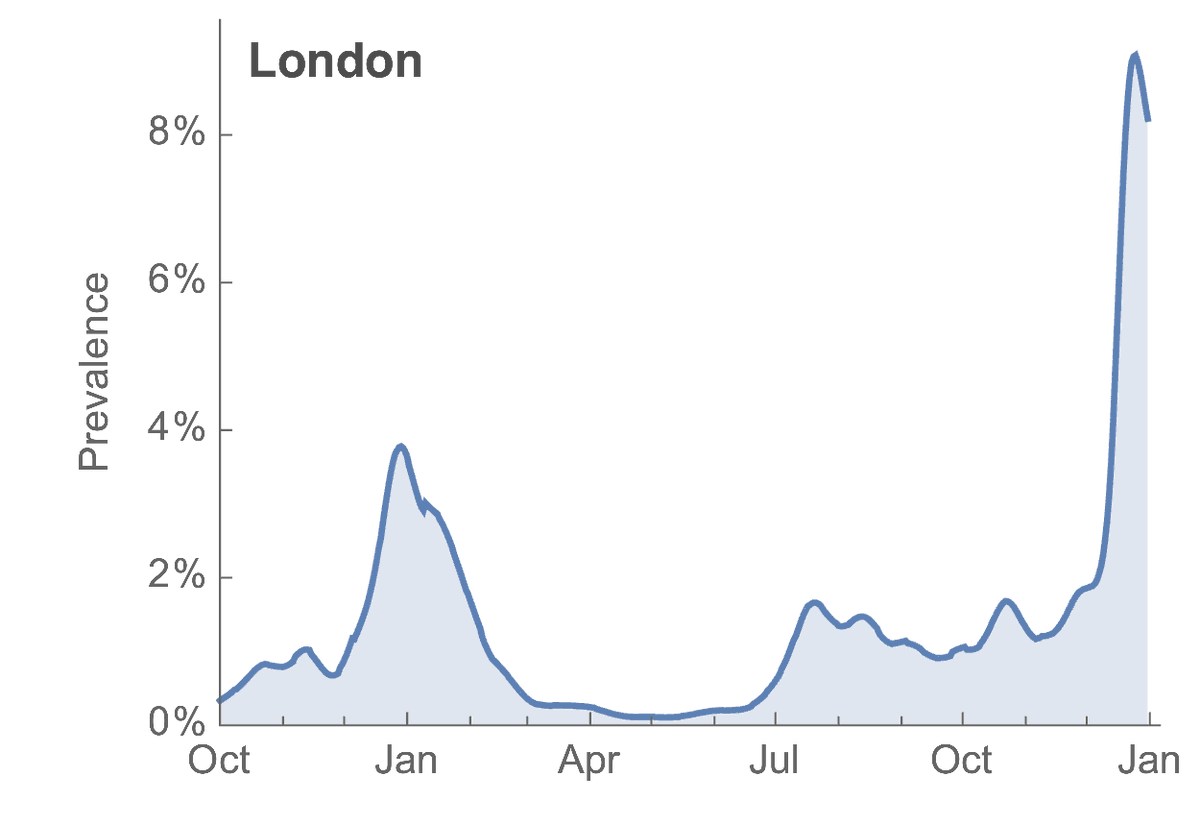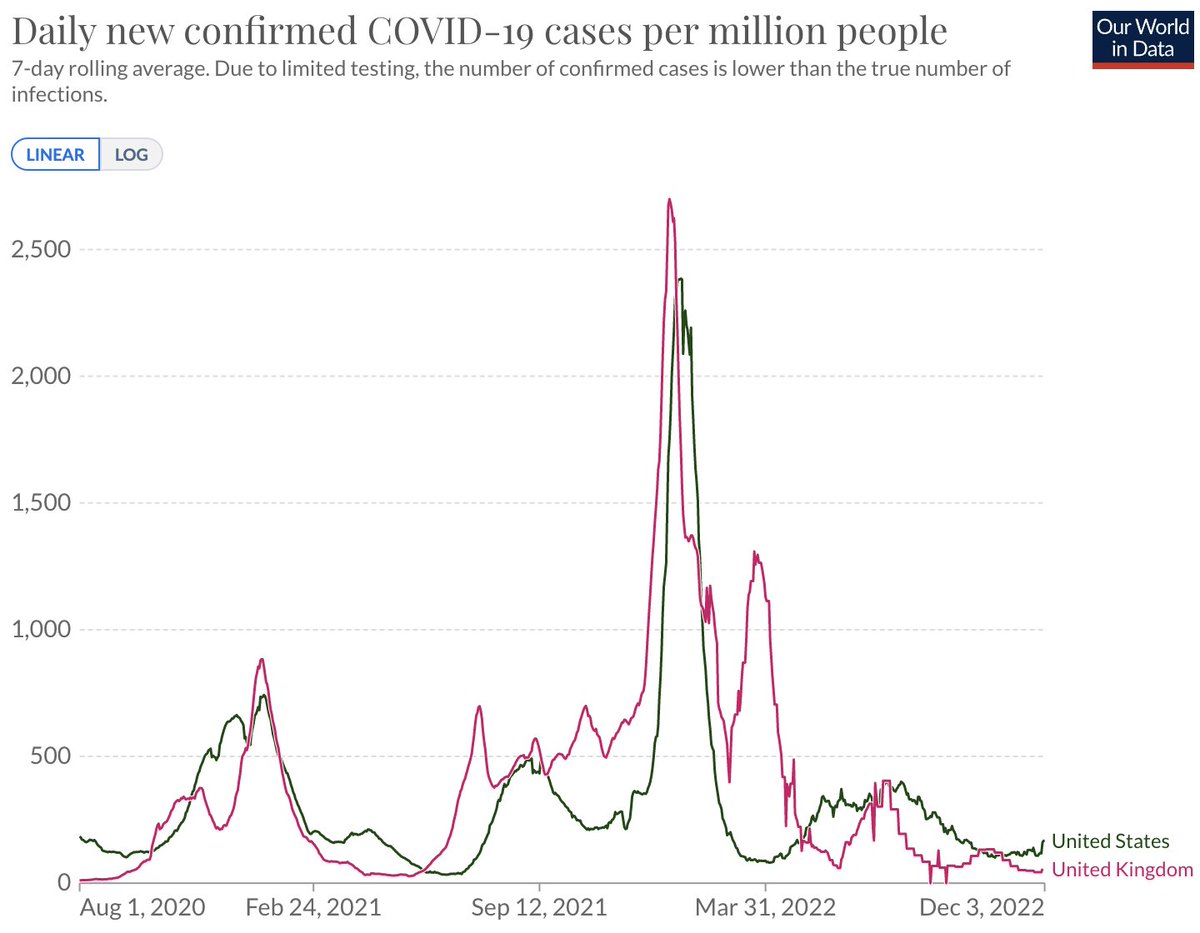With Omicron, case counts in the US and many other countries have skyrocketed. The US 7-day average is now ~680k cases per day, or 0.2% of the population recorded as confirmed cases each day. 1/15 

However, a large fraction of infections, symptomatic and otherwise, don't end up reported as cases due to lack of testing (either the individual doesn't seek testing or testing is desired but not readily found). 2/15
Historically, I have assumed that around 30% of infections in the US are reported as cases. This number was derived from seroprevalence and modeling estimates from sites like (no longer updated) covid19-projections.com. 3/15
However, the single best study I'm aware of for estimating reporting rate is the ongoing @ONS study in the UK that mails swabs to a fraction of households regardless of symptom status (ons.gov.uk/peoplepopulati…). 4/15
Here, I'll be comparing @ONS survey data to @UKHSA case counts in a dataset compiled by @seedragons and available at github.com/seedragons/lon… (and supplemented with data through Dec 31 via ons.gov.uk/peoplepopulati…). 5/15
Recent data from late Dec from London had ~9% of individuals positive by PCR for SARS-CoV-2. So roughly 1 in 11 people with infections with detectable virus in London. 6/15 

In late December, London had ~26k daily confirmed cases, or 0.3% of the population being recorded as confirmed cases every day. 7/15 

We can compare timeseries of prevalence to cases since Oct 2020. Here we observe a 0-day compatible lag between specimen collection date for cases and prevalence. 8/15 

We can plot the ratio of prevalence to cases with this 0-day lag to arrive at the following picture through time, where there's some variation, but a ~35X ratio of daily prevalence to daily cases is decently consistent. 9/15 

If we assume the average infection tests positive for ~10-days (based on @stephenkissler et al nejm.org/doi/full/10.10…), we
get an estimated reporting rate of 10/35 = ~29% or very roughly detecting 1 in 3.5 infections as a case. 10/15
get an estimated reporting rate of 10/35 = ~29% or very roughly detecting 1 in 3.5 infections as a case. 10/15
Importantly if we look at this ratio in Dec during which time Omicron became predominant and case loads increased dramatically, we see that both prevalence and cases increased in tandem and the ~35X ratio was largely maintained. 11/15 

This suggests to me that despite severe outcomes being more rare with Omicron and despite a huge surge in cases that reporting rate for Omicron in London remained fairly stable and did not differ hugely from Delta. 12/15
This fits with case reports suggesting a large fraction of symptomatic infections for Omicron (eurosurveillance.org/content/10.280…, medrxiv.org/content/10.110…). 13/15
I don't have a good sense of how well testing infrastructure held up in London and how this compares to the US, but in general, this would suggest to me to be using something closer to 1 in 4 or 1 in 5 for reporting rate in the US rather than the 1 in 10 I've seen floated. 14/15
Given ~680k cases per day, this would in turn suggest 0.8% or 1% of the US being infected with SARS-CoV-2 every day. This would translate to perhaps 5% or 10% of individuals currently infected with SARS-CoV-2 in the US. 15/15
• • •
Missing some Tweet in this thread? You can try to
force a refresh












